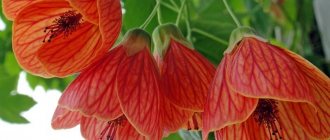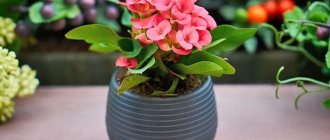What will you read about in the article?
- What potted flowers to choose for the bedroom? Some of the most popular plants
- The healthiest flowers for the bedroom
- Other flowers for the bedroom
- What plants should you avoid in the bedroom?
- The air in our house
- What flowers in the bedroom cleanse the air of toxins?
Flowers enliven the bedroom and make it more cozy; they are also a wonderful decoration. Some plants humidify the air and cleanse it (even of strong toxins!), while others can cause allergies or illness. Therefore, today we present the most popular flowers for the bedroom along with a description of their use and care requirements.
Find out if the plant you keep in your bedroom has a positive effect on your sleep health and if it's worth moving it to another room in the house. Also find out which flowers can purify the air from harmful substances, such as cigarette smoke.
What potted flowers to choose for the bedroom? Some of the most popular plants
To begin with, we will present a few plants that are worth putting in your bedroom and that will additionally provide you with a fantastic decoration. We are talking here about woody and common aloe, Guinea sanseveria and orchid.
Aloe tree and aloe vera are succulents that grow up to 1 meter in height. It is worth pruning them to reduce their growth, while still benefiting from their beneficial properties for our health (they are contained in the gel visible after the leaf breaks down). Aloe in the bedroom filters and humidifies the air.
It will feel best on a windowsill or in close proximity to a window. It grows easily and is drought tolerant (but also frost sensitive). Water once a week, and less often in winter.
Sanseveria Guinea is a variety that, like aloe, grows up to 1 meter in height. It has long, stiff, narrow and upright leaves. Produces large amounts of oxygen, especially at night. It is not a demanding plant and grows well in shady bedrooms. You must remember that it is important to fertilize it and also replant it every few years in a larger pot with fresh soil. Tolerates dry air well.
The orchid has thick, leathery leaves and grows to a height of about 35 centimeters. It has bell-shaped flowers of different colors, collected in a long inflorescence. This plant requires a bright position and high humidity. It does not like too frequent watering, but responds well to (even every day) irrigation with water, for example, from a spray bottle.
Plants that produce oxygen at night:
- Aloe vera and wood aloe. These succulents grow up to 1 meter in height, so they should be trimmed to reap the beneficial properties of the leaf sap.
- Guinean Sanseveria . This plant has long, straight leaves and also produces large amounts of oxygen.
- Orchid . It has beautiful, delicate, bell-shaped flowers and is quite demanding to grow.
Aloe is an amazing plant that makes an interesting decoration for a bedroom window.
Recommended by topic
How to sleep on a pillow correctly. One basic rule and many nuances Circadian rhythms. Why do we sleep at night and stay awake during the day? You can’t overdry the plant and water it too much and often. Watering is needed when the top layer of soil in the pot dries out. Use either boiled or filtered water for irrigation.
It is advisable to add a little lemon juice to it to compensate for the lack of salt in the water. Flowers should be regularly sprayed with water.
Jasmine should not be placed in close proximity to heating appliances in winter.
Cost: from 1500 rub.
The healthiest flowers for the bedroom
Of course, aloe vera, wood aloe, guinea sanseveria and orchid do not close the list of flowers and indoor plants for bedrooms that purify the air. We have a lot to choose from, for example, the fern is slowly returning to its former popularity.
A fern is a plant with characteristic, green, succulent leaves. Grows well in shady places where temperatures are moderate. It can grow to large sizes and looks good in hanging containers, pots and baskets. The substrate requires constant moisture, which means it needs to be watered two or three times a week. A fern in the bedroom cleanses the air of formaldehyde (which we will talk about a little later).
Can a ficus stand in the bedroom? Through thick and thin! Spring ficus "Robusta" has bare, leathery, glossy, decorative leaves. Like a fern, it cleanses the air of formaldehyde. It prefers bright sunshine and tolerates high temperatures well. Attention! Ficus has poisonous leaves, so keep it away from children and animals.
Lavender
Lavender is a source of essential oils. It perfectly calms, relieves stress, and induces sleep. If you place a flower in the bedroom, it will improve your well-being and mood. And, accordingly, will improve the quality of night's rest.
- An unpretentious plant.
- Positive impact on human energy.
- Does not tolerate heat well.
- Likes frequent ventilation.
- Does not like direct sunlight.
Caring for the plant is quite simple. All you need is good watering and bright lighting. Lavender grows well outdoors, so it also requires a lot of light and air indoors. You also need to frequently loosen the soil in the pot.
Cost: from 600 rub.
Other flowers for the bedroom
What other flowers are recommended for the bedroom?
Chlorophytum has decorative saber-toothed leaves (similar to decorative grass leaves). It can be placed in different places because it tolerates both partial shade and sun. In a very dark place it loses its decorative white stripes on the leaves. The herbaceous plant Chlorophytum looks beautiful planted in hanging containers or placed on tall furniture. Great for creating compositions with other indoor plants.
Spathiphyllum is a plant with shiny dark green decorative leaves and original flowers. Purifies the air from toxic substances that can be released by furniture, carpets and plastic. Grows well in semi-shaded and even shady places.
Christmas cactus . It is watered infrequently during most of the year, but more generously from the time the flower buds appear. Does not bloom if it is kept in a warm room (above 22º C). In winter it grows best at temperatures between 10 and 15º C. It does not like to be transplanted and, if necessary, it is best to do so when the roots are coming out of the pot.
Nephrolepis is a type of fern that likes shady places with good humidity (this is worth remembering, especially during the heating season). It can be sprayed with water every day, and also placed in a pan with water and pebbles. Large Nephrolepis ferns look beautiful in hanging containers and pots.
What plants should you avoid in the bedroom?
Although most plants are beneficial to our health, some of them can be harmful. We are mainly talking about cut flowers, with a strong aroma that can cause allergic reactions in sensitive people. Moreover, this smell often interferes with sleep.
Therefore, it is better not to place potted flowers such as hyacinths or oleanders, as well as bouquets of lilies, roses or hydrangeas in the bedroom. It is also not recommended to grow begonias, primroses, lilies of the valley, African violets or Persian cyclamen in the bedroom.
If there are small children or animals in the house, it is better not to leave flowers such as philodendron, beautiful shpurg (the so-called Star of Bethlehem), anthurium, diefenbachia, monstera, oleander, ficus, dracaena, allocasia and spathiphyllum in the bedroom (and at home in general). Although they have a good effect on the microclimate in the room, consuming their leaves can lead to poisoning.
Let us add here that, according to the principles of Feng Shui, it is better not to use flowers in the bedroom. As living, developing organisms, they bring energy of movement, vitality and growth into the room, which is not conducive to rest. Particularly unacceptable are cacti, whose needles symbolize fencing and protection from the outside world. Sharp shapes, according to Feng Shui, increase tension and disrupt the feeling of comfort that we would prefer to avoid (especially in the bedroom).
Plants that are not recommended to be placed in the bedroom:
- Intensely fragrant potted and cut flowers: hyacinths, oleanders, begonias, primroses, lilies of the valley, African violets, Persian cyclamen, lilies, roses, hydrangeas.
- Flowers with poisonous leaves: spathiphyllum, monstera, discharge, dieffenbachia, anthurium, star of Bethlehem, dracaena, oleander, ficus, philodendron.
- According to the principles of Feng Shui, you should avoid placing flowers in the bedroom, especially cacti, whose needles cause discomfort and tension in the interior.
Hyacinths are not a good choice for the bedroom due to their intense scent.
What is Feng Shui against?
According to the teachings of Feng Shui, an indoor flower should suit both the place and the owner. It is not for nothing that not only eastern peoples have beliefs that some plants attract love, wealth and prosperity, while others, on the contrary, for a long time prevent single people from starting a family, and the poor from getting rich. Popular wisdom does not advise single people to keep flowers such as:
- begonia;
- birch;
- hibiscus;
- orchid;
- fern;
- Christmas star.
- tuberose.
They believe that begonia attracts the attention of the opposite sex. Lonely owners of the plant will not be able to achieve family happiness for a long time.
What flowers in the bedroom cleanse the air of toxins?
Why are we writing about this? One NASA study found that some houseplants can absorb most of the harmful substances mentioned above. It is estimated that thanks to them we can remove them from the air by even 85%. What are these plants? We've already mentioned a few of them, but for the sake of order, we'll also talk about them in the context of detoxifying the air.
For example, fern not only promotes proper air humidification, but also cleanses them of formaldehyde, xylene and carbon dioxide. Ivy absorbs formaldehyde, benzene and carbon dioxide. Good for areas with low sunlight, and by using appropriate supports you can give it interesting shapes.
Azalea is a flower that can handle formaldehyde cleansing. However, this is a very demanding plant. In turn, it allows you to remove formaldehyde, xylene and trichlorethylene from the air. Philodendron can filter the air from many harmful substances (benzene, ammonia, formaldehyde), but it is dangerous (so it is better not to store it if there are small children or animals in the house). Chrysanthemums remove formaldehyde, ammonia, benzene and xylene from the air, and spathiphyllum removes benzene and formaldehyde.
Thanks to anthurium, the air in the bedroom will be better humidified, in addition, you will get rid of substances such as xylene or toluene. Skinapsus loves shady places, and gerberas love sunny places.
Houseplants cleanse the air of many toxins.











